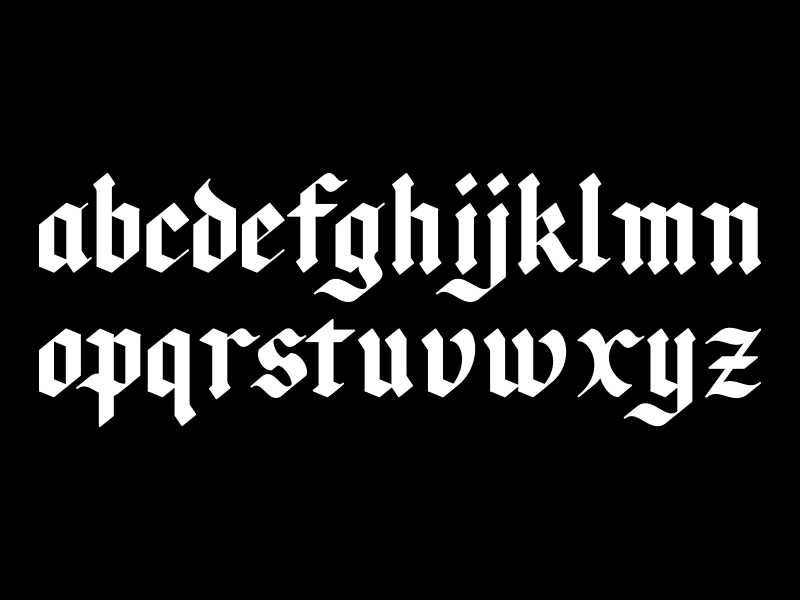

Textiles, however, was very rarely used after that. Johannes Gutenburg, who first introduced printing to Europe, carved a textualis style typeface when printing his famous 42-line Bible. The letter ‘s’ often has a diagonal line connecting its two bows, also somewhat resembling an 8 the letter ‘a’ has a straight back stroke, and the top loop eventually became closed, somewhat resembling the number 8.the letters g, j, p, q, y, and the hook of h have descenders, but no other letters are written below the line.when a letter with a bow (in b, d, p, q) is followed by another letter with a bow (such as “be” or “po”), the bows overlap and the letters are joined by a straight line (this is known as “biting”).ascenders are vertical and often end in sharp finials.letters formed by sharp, straight, angular lines, unlike the typically round Carolingian.It was most widely used in France, England and Germany. Textualis, also known as textura or Gothic bookhand, was the most calligraphic form of blackletter and is the form most recognised as Gothic. They are known as Textualis, Schwabacher, Fraktur, Cursiva, Hybrida and Donatus-Kalender. Example of Carolingian minusculeīlackletter comes in different forms, each with different characteristics and styles. This resulted in the birth of Blackletter. They needed to be produced fast and so different forms of Carolingian were being used and developed, allowing to be written more quickly to meet the demand for new books. With new universities being founded and more people becoming literate, many new books for business, law, history and other subjects were being made. Carolingian was legible, but very time consuming and hard to produce, and its size took up a lot of space on a page, when writing materials were expensive. Blackletter is developed originally from Carolingian, to adapt to the increasing literacy of Europe at the time. Blackletter can also be called Old English, although it has nothing to do with the Old English language, which actually came many centuries before.

Blackletter, also referred to as Gothic script, was a calligraphic script, widely used throughout Western Europe from around 1150 – 17th century, and was still used for the German language until the 20th century.


 0 kommentar(er)
0 kommentar(er)
